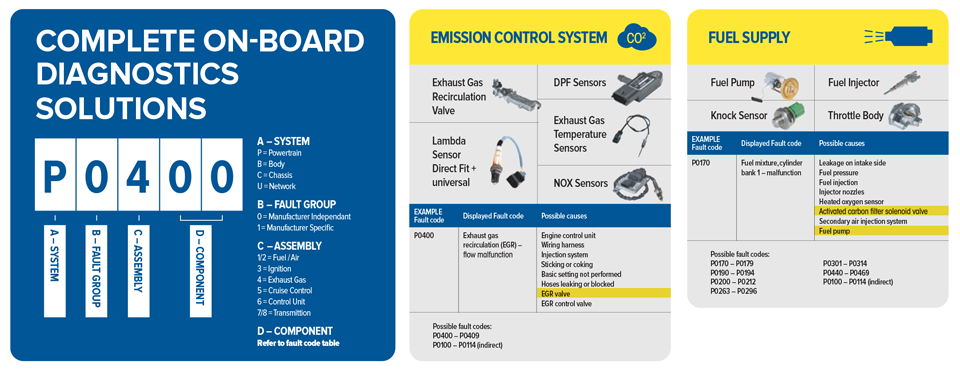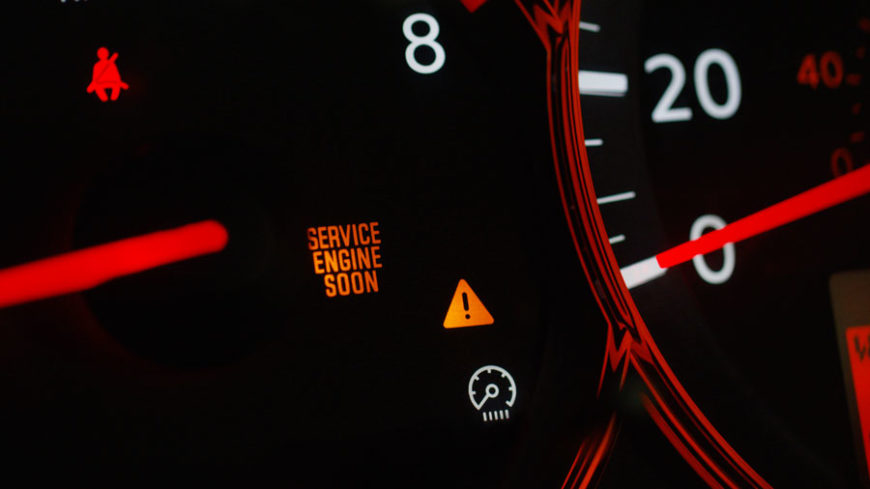Identifying Common Faults in Car Emission Control Systems
Identifying common faults in car emission control systems involves monitoring the catalytic converter, oxygen sensor, and vacuum hoses for potential issues. Car emission control systems play a critical role in reducing harmful pollutants released into the environment.
These systems are designed to monitor and regulate the emissions produced by the vehicle’s engine, ensuring it complies with environmental regulations. However, over time, various components of the emission control system can develop faults, leading to increased emissions and decreased fuel efficiency.
Recognizing these common faults is essential for maintaining a well-functioning emission control system and minimizing the vehicle’s environmental impact. We will explore the key components of car emission control systems and discuss how to identify and address common faults in these systems.
Understanding Car Emission Control Systems
Car emission control systems play a vital role in reducing harmful pollutants released into the environment. Understanding these systems is essential for maintaining a vehicle’s performance and environmental friendliness.
Components Of Car Emission Control Systems
Car emission control systems consist of several key components:
- Catalytic converter
- Oxygen sensor
- EGR valve
- PCV valve
- Evaporative emissions control system
Importance Of Car Emission Control Systems
Car emission control systems are crucial for:
- Reducing harmful emissions
- Improving air quality
- Enhancing fuel efficiency

Credit: www.mdpi.com
Common Faults In Car Emission Control Systems
Common faults in car emission control systems can lead to various issues that affect the vehicle’s performance and the environment. Identifying these faults is crucial for maintaining the efficiency of the emission control system and reducing harmful exhaust emissions.
Check Engine Light Illumination
The illuminated check engine light often indicates a problem with the emission control system. It could be triggered by a faulty oxygen sensor, loose gas cap, or a malfunctioning catalytic converter.
High Levels Of Engine Exhaust Emissions
Excessive emission of pollutants from the vehicle’s exhaust is a clear indication of a fault in the emission control system. This can contribute to environmental pollution and should be addressed promptly.
Decreased Fuel Efficiency
A drop in fuel efficiency may be attributed to a faulty emission control system, as it affects the combustion process and leads to wastage of fuel. Monitoring fuel consumption can help in identifying this issue.
Strange Smells Or Odors From Exhaust
Unusual smells or odors emanating from the exhaust can signify a problem in the emission control system, such as a malfunctioning catalytic converter or a rich fuel mixture. These odors can be harmful to health and need immediate attention.
Acceleration Problems
Difficulty in acceleration may be linked to a faulty emission control system, as it can affect the air-fuel mixture and combustion process, leading to performance issues. A thorough inspection is necessary to pinpoint the root cause of this problem.
Causes Of Faults In Car Emission Control Systems
When it comes to car emission control systems, identifying common faults is crucial for maintaining proper vehicle performance and environmental responsibility. Understanding the causes of these faults can help car owners and technicians address issues promptly, ensuring efficient operation and compliance with emissions regulations.
Malfunctioning Oxygen Sensor
An oxygen sensor is a vital component of the car’s emissions control system that monitors the air-fuel mixture. When the sensor malfunctions, it can lead to improper fuel mixture, affecting emissions and performance.
Catalytic Converter Failure
The catalytic converter plays a key role in reducing harmful emissions from the vehicle’s exhaust. Over time, it can fail due to factors like engine misfires, oil or coolant contamination, or physical damage, leading to increased emissions.
Faulty Egr Valve
The Exhaust Gas Recirculation (EGR) valve helps reduce nitrogen oxide emissions by recirculating a portion of the exhaust gas into the engine’s intake. When the valve is faulty, it can cause an increase in nitrogen oxide emissions, affecting air quality.
Vacuum Leaks
Vacuum leaks in the emission control system can disrupt the air-fuel mixture, leading to suboptimal combustion and increased emissions. Such leaks can occur in hoses, gaskets, or other components, impacting overall system performance.
Damaged Or Loose Gas Cap
A damaged or loose gas cap can cause fuel vapors to escape from the tank, contributing to increased emissions and potential fuel system issues. Ensuring a proper seal with the gas cap is essential for maintaining emission control.

Credit: www.autoresource.co.uk
Diagnostic Methods For Car Emission System Faults
Identifying common faults in car emission control systems is crucial for maintaining vehicle performance and environmental standards. Proper diagnostic methods are essential to pinpoint issues accurately.
Using An Obd-ii Scanner
An OBD-II scanner is a tool that connects to a vehicle’s onboard computer to retrieve diagnostic trouble codes that indicate emission system malfunctions.
Visual Inspection
Visual inspection involves physically examining the components of the emission system for visible damage, leaks, or loose connections.
Exhaust Gas Analysis
Exhaust gas analysis measures the composition of gases in the vehicle’s exhaust, which can help identify issues such as rich or lean fuel mixtures.
Labscope Testing
Labscope testing uses a tool to analyze waveforms and signals from sensors in the emission system, providing detailed information on system performance.
Smoke Testing
Smoke testing involves introducing smoke into the emission system to detect leaks or faulty components by observing where the smoke escapes.
Preventing And Fixing Car Emission System Faults
A properly functioning car emission control system is essential for reducing harmful emissions and ensuring the longevity of your vehicle. However, like any other component, the emission system can develop faults over time. To prevent these issues from escalating and causing further damage, it’s crucial to identify and address them promptly. In this section, we’ll discuss three key strategies for preventing and fixing car emission system faults: Regular Maintenance and Inspection, Immediate Repairs and Replacements, and Proper Use of Fuel and Emission Systems.
Regular Maintenance And Inspection
Regular maintenance and inspection play a vital role in keeping your car’s emission control system running smoothly. By conducting routine checks and servicing, you can proactively identify and address any faults before they lead to more significant problems. Here are a few key maintenance and inspection tasks to consider:
- Keep up with recommended service intervals for your vehicle, including oil changes and filter replacements. Regularly changing the air filter can prevent clogs and ensure optimal airflow to the engine, reducing emissions.
- Inspect the oxygen sensor, which measures the amount of oxygen in the exhaust gases. Faulty oxygen sensors can negatively impact fuel efficiency and emissions. If needed, replace them according to the manufacturer’s recommendations.
- Check for any visible signs of damage or leaks in the exhaust system, such as rust, holes, or loose connections. Addressing these issues promptly can prevent harmful gases from escaping and ensure the proper functioning of the emission control system.
- Monitor the “check engine” light on your dashboard. If it illuminates, it’s essential to have your vehicle diagnosed by a professional mechanic to identify and rectify any underlying emission system faults.
Immediate Repairs And Replacements
When a fault is identified in your car’s emission control system, immediate repairs and replacements are crucial to prevent further damage and ensure proper functionality. Ignoring these faults can lead to increased emissions, reduced fuel efficiency, and potentially expensive repairs down the line. Here are a few common components that may require immediate attention:
- Catalytic converter failure: If the catalytic converter is faulty or damaged, it may not effectively convert harmful gases into less harmful emissions. Prompt replacement is necessary to maintain compliance with emissions regulations and prevent engine damage.
- EVAP system leaks: Leaks in the Evaporative Emission Control (EVAP) system can result in increased emissions and reduced fuel efficiency. Identifying and repairing these leaks promptly is essential to prevent further damage and maintain optimal vehicle performance.
- Faulty spark plugs: Worn-out or faulty spark plugs can cause incomplete combustion, leading to increased emissions and reduced fuel economy. Replacing spark plugs as recommended by your vehicle’s manufacturer helps maintain efficient combustion and reduces emissions.
Proper Use Of Fuel And Emission Systems
The way you use and handle the fuel and emission systems in your vehicle can have a significant impact on its overall emissions. To prevent faults and optimize the performance of the emission control system, consider the following best practices:
- Use the recommended fuel: Always use the type of fuel recommended by your vehicle’s manufacturer. Using the wrong fuel can lead to fuel system malfunctions and increased emissions.
- Avoid excessive idling: Extended periods of idling cause unnecessary emissions. Whenever possible, turn off your engine if you anticipate being stationary for more than a minute.
- Maintain proper tire pressure: Underinflated tires increase drag and decrease fuel efficiency, resulting in higher emissions. Regularly check and inflate your tires to the recommended pressure.
By following these guidelines for preventing and fixing car emission system faults, you can ensure your vehicle operates efficiently, reduces harmful emissions, and remains compliant with environmental regulations. Regular maintenance, prompt repairs, and responsible fuel and emission system usage contribute to a cleaner environment and a healthier car.

Credit: www.autozone.com
Frequently Asked Questions On Identifying Common Faults In Car Emission Control Systems
What Is The Fault With The Emission Control System?
The fault with the emission control system refers to a malfunction in the system that is responsible for reducing harmful pollutants released from a vehicle’s exhaust. It can lead to increased emissions, decreased fuel efficiency, and potential environmental and health hazards.
What Are The Most Common Emission Problems?
Common emission problems include faulty oxygen sensors, catalytic converter issues, and malfunctioning spark plugs. Vacuum leaks, worn-out gaskets, and exhaust system leaks can also lead to emission challenges.
When There Is A Malfunction With The Emission Control System?
When the emission control system malfunctions, it can cause excessive pollution and poor fuel efficiency in your vehicle. It’s essential to address this issue promptly to ensure compliance with environmental regulations and maintain optimal engine performance.
How Do You Know If Your Car Has Emission Problems?
Common signs of car emission problems include a check engine light, decreased fuel efficiency, and unusual exhaust smoke. Unpleasant smells, rough idling, or loud noise may also indicate issues. Regular maintenance and inspection can help prevent and address these problems.
Conclusion
In a nutshell, understanding the faults in car emission control systems is crucial for maintenance. Regular inspection and prompt repairs can help reduce harmful emissions and ensure better performance. Stay informed and proactive in addressing these issues for a cleaner environment and smoother driving experience.
